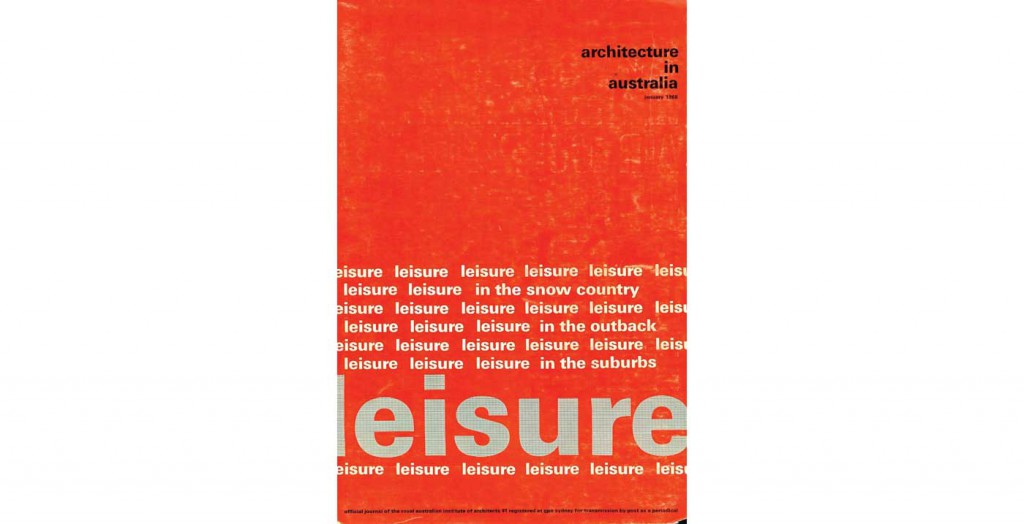



table of contents

previous articles

next articles
Feature article



CONTENTS
EDITOR'S LETTER
In celebration of the warmer weather, holiday season and longer days, Architecture Bulletin has come to focus on the role architecture plays in shaping our leisure time. The editorial committee met to ponder – how do we as a profession design for the experience of leisure?
Leisure can encompass many ideas: relaxation, luxury, cultural engagement, distraction and wellbeing. There is always a transaction or transformation associated with leisure spaces and environments; the visitor is transformed – either relaxed and rejuvenated, or inspired and entertained. So how do we create the spaces that inspire these notions?
The legislation of a 40 hour week, paid annual leave and long service leave in Australia during the 1940s inspired a new and acceptable form of leisure. With its population’s increased desire to separate from the everyday, working self, NSW increased its parks, pools, beach pavilions, hotels and motels.
Leisure continued to become a focus for architectural interpretation, and we were delighted to discover that by coincidence Architecture in Australia had run a leisure-themed issue exactly 50 years ago (see illustrated – January 1966, vol.54 No.4). But how have these early interpretations of leisure developed to adapt to a contemporary audience?
In this issue of Architecture Bulletin Scott Hawken looks at the current refurbishment of Sydney’s iconic coastal typology – the beach pavilion – and Rachel Couper takes us on architectural journey of Taronga Zoo it celebrates its 100th birthday.
Shaun Carter speaks with John Choi (CHROFI) and Philip Coxall (McGregor Coxall) about their innovative collaborations on park designs. David Tickle continues the park theme, focusing on Sydney’s Central Park development and its take on inner city leisure.
And Nicola Balch sits down with Sarah Clift from the Parramatta River Catchment Group to discuss making a swimmable river in Sydney’s west.
Andrew Nimmo reminisces on Brisbane’s Expo 88 and ponders the myth of technology allowing us increased leisure time. Mark Szczerbicki speaks to recent DROGA resident, Nick Wood, about his research into the Australian awning. And Michelle Tabet looks to the 2016 Venice Architecture Biennale with her reflection on the swimming pool.
We also take a look at other Institute programming: Andrew Daly from TYP-TOP reports on the Lindner Prize research from 2015 and Anthony Burke catches up with the creative directors of the 2016 National Conference to hear the latest on their plans for Adelaide. And finally we say farewell to Stuart Murray, Ken Woolley and Jennifer Taylor.
Andrew Nimmo
Chair of the Editorial Committee
Hannah McKissock-Davis
Editor













